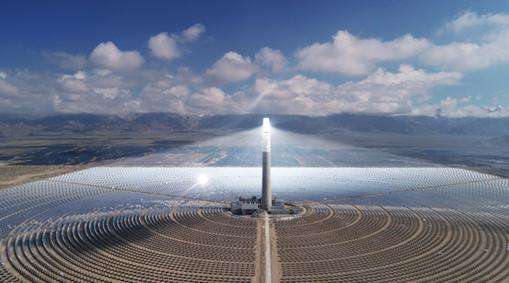The cooling tower of a thermal power plant is a device used to cool the heat generated during the electricity generation process. In thermal power plants, thermal energy is usually generated by burning fuels (such as coal, natural gas, etc.), and then the thermal energy is converted into steam through a boiler to drive a turbogenerator to produce electricity. During this process, the combustion of the fuel will generate a large amount of heat, and the operation of the generator will also generate a large amount of heat, which must be dissipated through the cooling tower to maintain the normal operation of the equipment.
Specifically, the cooling tower of a thermal power plant mainly reduces the water temperature through water circulation and heat dissipation through evaporation, thereby dissipating heat. The water ofthe cooling tower will be transported to the top of the tower by the water pipe, then atomized into small water droplets through the nozzle and enter inside the tower with the airflow. Inside the tower, the water droplets are in full contact with the air, dissipating heat through evaporation, dissipating heat, and the water temperature gradually drops. Through the wrapping layer inside the tower body, the contact area between water droplets and air is increased, thereby improving the heat dissipation effect. The cooled water returns to the pool again, is pumped by the circulation pump, and then enters the tower body again for circulation cooling. Through this cyclical process, the cooling tower can dissipate heat to ensure the normal operation of thermal power plant equipment.
In fact, these “big chimneys” in the centersElectric ales are not chimneys that emit exhaust gases as we understand them. Its name is cooling tower. The power plants we usually see today are essentially thermal power plants. When producing thermal power, the unit requires a large amount of cooling water for cooling to ensure smooth power generation. However, without these cooling towers, a large amount of water would be consumed every day for heat dissipation and cooling.
So why do cooling towers emit “smoke”? After cooling the device with cold water. Water vapor is produced when the water in the cooling tower heats up. Another function of the cooling tower is to recycle water without wasting water resources. This uses the difference in density of the air insideeur and outside the cooling tower to form a pressure difference, then ventilate it. Most of the water vapor and air cooled to form water droplets and fell into the tank. The water vapor that did not have time to cool escaped from the "big chimney" and formed the "smoke" that we see, which is in reality. It's just water vapor.
So why is it designed like that? Like a big speaker played backwards! In fact, previous power plants also had cooling towers. At the beginning of the design, all shapes were tried, including straight shapes and diamond-shaped ones. I finally settled on this big speaker look. That’s also a lot of factors to take into account. Since power plant cooling towers are usually built at a height of around 160 to 200 meters, this style is the most economical and has a stable structure.
The top is small and the bottom is thick, which can accelerate the flow of Ke Ying and allow the air to discharge as much heat as possible. To make water use more efficient, this “chimney” does not eliminate waste gases, but the thin chimney next to it does! Do not mistake yourself.














